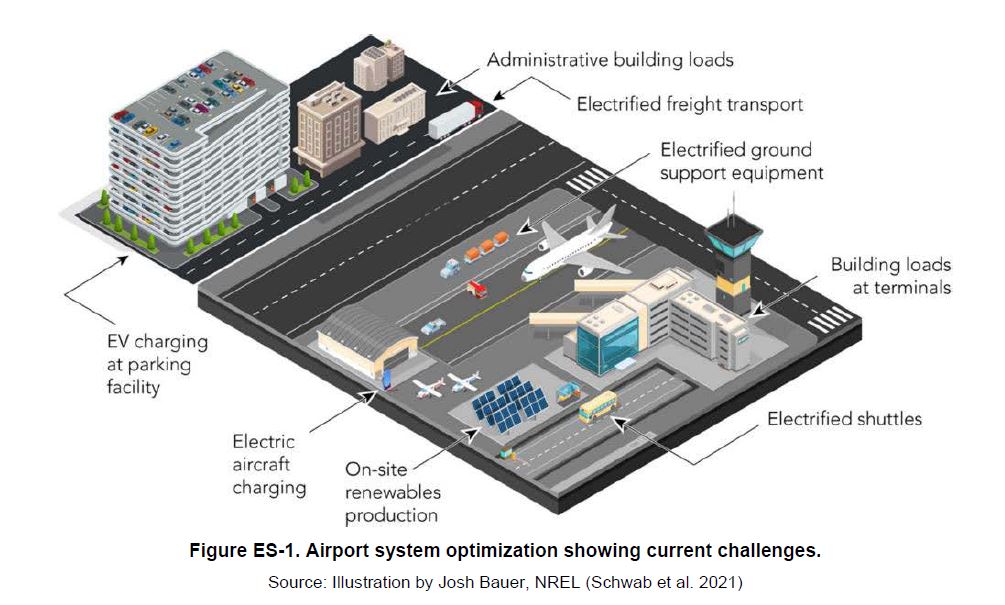
The Federal Aviation Administration (FAA) has released the U.S. National Renewable Energy Laboratory’s (NREL) study on vertiport electrical infrastructure.
The study’s executive summary says:
“Determining the electric load demands associated with introducing these aircraft is the first step in finding a cohesive solution for all parties. Potential flight routes were derived, taking into account potential vertiport sites, and drawn in Google Maps as airspace route planning continues to evolve. Aircraft energy consumption was calculated using a physics-based model and considering aircraft parameters, routes, and range of passengers as inputs. Total vertiport operation—including flight schedule and charging demand—was determined using an agentbased model and considering calculated aircraft and vertiport energy consumption, passenger demand schedule, estimated fleet of aircraft, and identified charging infrastructure.
“Charging demand was determined for two scenarios: (1) constrained, with three chargers at each site (maximum charging rate of 900 kW per site), and (2) unconstrained, with an unlimited number of chargers per site (maximum charging rate of 13.3 MW per site). This highlights the importance of identifying the necessary number of chargers and charging strategy for potential vertiport sites.
“Based on charging demand determined for each site, the research team at NREL performed three key analyses: grid impact, on-site generation techno-economic analysis, and GHG emissions impact analysis due to eVTOL charging load. Each analysis considered three scenarios: business as usual (BAU) (without eVTOL charging), BAU including charging demand, and BAU including charging demand and on-site renewable generation. Jobs and economic development, as well as a hazards analysis, were also examined.
“Grid impact analysis provided insights into the feeder operating conditions under given scenarios of electric vehicle support equipment (EVSE) infrastructure and DER adoption and evaluated upgrade costs. In the absence of actual utility feeder models, realistic test feeders were selected.
“Synthetic Models for Advanced, Realistic Testing: Distribution Systems and Scenarios (SMART-DS) data sets provided realistic, large-scale U.S. electrical distribution models for testing advanced grid algorithms and technology analysis. Grid impact analysis found that for all sites, increased demand due to the addition of charging can cause undervoltage situations, overloading the distribution line(s) and transformers. Thus, to accommodate the addition of such charging demand, grid infrastructure needs to be upgraded or an energy storage system needs to be installed. This highlights the importance of performing grid impact analysis for potential vertiport sites to ensure charging demand can be accommodated without affecting grid infrastructure and power supply.”
For more information
https://www.nrel.gov/research/publications.html
(Image: NREL)


